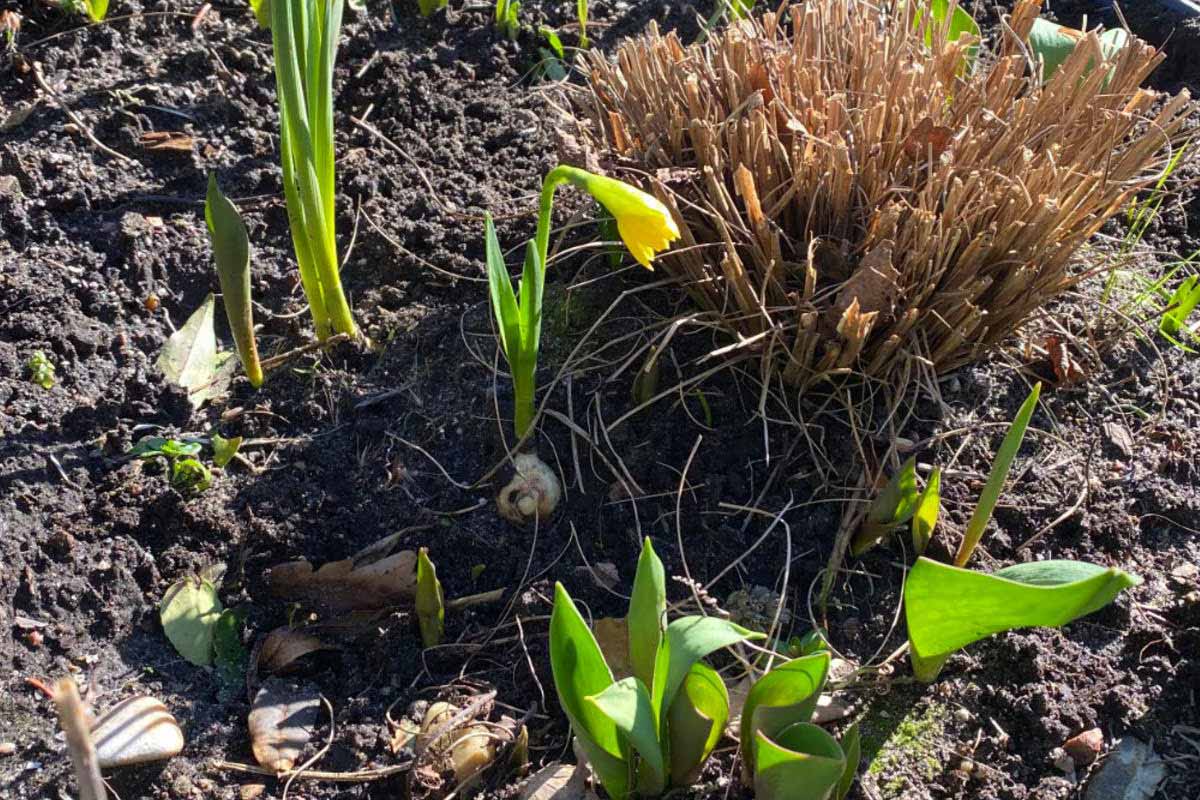Wild garlic has a way of stealing the show with almost no effort at all. Plant a little now, and spring rewards you with perfume and flavor. It’s easy, forgiving, and surprisingly generous. Let’s make room for a patch you’ll brag about.
Why this woodland herb belongs in your yard
You want a plant that earns its keep. This one does it with charm and speed. In early spring, broad leaves unfurl while most beds still look sleepy. The scent is gentle, bright, and unmistakably garlicky. Cooking gets easier the moment you have a handful by the back door. You step outside, snip, and supper turns interesting.
If you’ve ever wanted to grow wild garlic, this is your season. It loves the cool months and doesn’t demand drama. Give it a quiet corner and it settles in quickly. In May and June, white star-shaped flowers float above the leaves like little lanterns. Pollinators notice. You will too, every time you pass and catch that clean, green aroma.
The nice part is pace. Plant a few bulbs now, and the patch builds year after year. You’ll have enough for pesto, plus extra to share. That’s the pull of wild garlic—low effort, daily joy.
The spot it loves and how to start
Think of the places where ferns thrive. Cool, moist, and calm under trees. That’s where this herb relaxes and spreads. If you don’t have a canopy, pick the shadiest bed you’ve got.
To growwild garlic with zero fuss, set the stage right:
- Choose partial shade to full shade with moisture that lingers.
- Loosen the soil so bulbs settle without resistance.
- Pull early weeds to remove competition in spring.
- Water lightly after planting, and walk away.
Plant bulbs in small clusters. Four inches apart works beautifully. Go a bit deeper than you expect, about four to six inches. That depth keeps them cozy through cold snaps.
I tuck mine beneath currant bushes. The soil stays loose and cool. I have another stash behind the shed in full shade. Different microclimates stagger the harvest and stretch the season. It’s a simple trick, and it makes your garden feel smarter. Yes, you can absolutely cultivate wild garlic in pots until the ground softens.
Bulbs, seeds, and patience that pays
Bulbs give you the fastest win. Pop them in during autumn, and you’ll see leaves by March. The plant wakes early, rolls out each blade, then shoots up buds. Soon after, the show fades and the foliage slips away.
Seeds are a slower ride, yet still worth it. Fresh seed from an existing clump often sprouts well. Older seed naps and needs time to wake. If you’re new, buy a packet and manage expectations.
Here’s a friendly rhythm for anyone aiming to grow wild garlic from scratch:
- Bulbs for speed: plant in fall through early spring, when soil isn’t frozen.
- Fresh seed for reliability: sow right after harvest, while vigor is high.
- Pots for timing: start indoors if winter locks the beds.
- Transplant gently: move young plants once roots hold.
The plant likes to choose its footprint. Give it room and it knits into green carpets. Crowd it, and it sulks. Remember, wild garlic wants dappled shade and steady moisture. Offer both, and it pays you back for years.
Care, harvest, and keeping it happy
This is low-maintenance gardening at its best. No heavy feeding. No complicated schedules. Just keep the soil from drying out during sudden warm spells.
When early spring arrives, watch closely. Leaves can appear while the lawn still looks half asleep. They’re most aromatic before the flowers open. That’s your sweet spot for the kitchen.
Keep the patch productive with a few easy habits:
- Harvest with a light hand so plants rebuild energy.
- Mulch thinly with leaf mold to lock in moisture.
- Split clumps every few years if growth slows.
- Rinse gently and pat dry before storing.
If conditions feel wrong, the plant retreats. It won’t send many leaves, and it won’t set much seed. Fix the site and it rebounds. Shift it to deeper shade or richer soil. Once it lands in the right place, wild garlic explodes with life. That’s when you smile and say, yes, I really did cultivate wild garlic.
Cook with it like a pro, without trying
The magic starts with a handful of leaves. They bring punch without the bite of raw cloves. Fold them into eggs, swirl through soup, or scatter over roasted potatoes. Simple food tastes dressed up.
A few favorite uses that never miss:
- Pesto: blitz leaves with olive oil, nuts, and Parmesan.
- Creamy sauces: stir in just before serving to keep the color bright.
- Herb oil: steep in warm oil, then drizzle on grilled vegetables.
- Sandwiches: chop fine and fold into butter or soft cheese.
You can dry or freeze it, though fresh sings louder. Store a jar of herb oil and weeknights feel easier. A spoon transforms a plain pan sauce into something you’ll remember. That’s daily flavor, earned by a short walk outside.
Keep planting a little each year. Your patch grows with you, steady and generous. This is why wild garlic fits modern kitchens so well. It waits quietly, then delivers bold results. A clean hit of green changes everything. With a steady hand, you’ll cultivate wild garlic into a household staple. And when guests ask where that brightness came from, you’ll point to the shade bed. Free flavor, all spring. That’s the quiet luxury of wild garlic, right outside the door.
